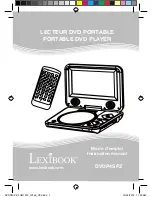
Aegis transmissions cannot be received by a
radio set to receive a Voice Guard transmission.
Accordingly, a Voice Guard transmission cannot
be received by a radio set to receive an Aegis
transmission.
Cryptographic keys are transferred into the
radio using a cryptographic Keyloader. Up to
seven (7) different cryptographic keys, numbered
1 - 7, can be transferred from a Keyloader and
stored in the radio. An individual key is automat-
ically selected on a per-group/channel basis ac-
cording to the radio’s programming. Groups and
channels within Aegis systems can be pro-
grammed for keys 1 - 6. Groups and channels
within Voice Guard systems can be programmed
for keys 1 - 7.
DES radios require a DES Keyloader (option
V4025). Operating details on the DES Keyloader
are contained in LBI-31541. VGE radios require a
VGE Keyloader (option V4028). See LBI-31685 for
operating details on the VGE Keyloader.
When operating on a group or channel pro-
grammed for private mode, all transmissions will
be private transmissions and the radio will receive
clear and private signals. The "PVT" status flag in
the display turns on when the private mode is
enabled. If the selected group or channel is pro-
grammed for autoselect capability, the mode may
be toggled between private and clear using the
2nd - PVT buttons (shifted SPC). Radios pro-
grammed for forced private operation do not allow
a change of the transmit mode; the PVT button
does not function.
Transferring Keys Into The Radio
The following procedure outlines basic key
transferring steps.
1.
Turn the radio off.
2.
Plug the modular connector of the Key-
loader cable into the Keyloader’s modu-
lar jack.
Before private messages can be sent or
received, one or more cryptographic
keys must be transferred into the radio
from the Keyloader.
NOTE
17
















































